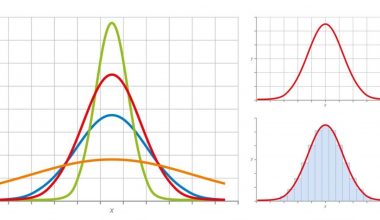A product strategy is a plan developed by a corporation to define a product’s vision and identify how that vision will be accomplished. A product strategy is developed with the “big picture” of a product in mind, assisting organizations in justifying why their product exists and how users would benefit. A well-executed product strategy guarantees that everyone is working towards the same high-level business objectives. Here, we’ll define what a product strategy is, the different types, and how you can develop an effective product strategy framework.
What is Product Strategy?
Product strategy bridges the gap between conceptualizing a product and developing a predetermined development plan. You might have a fantastic concept for the next great thing. However, it’s unlikely that you’d be able to go right from “dreamt up” to “drawn out on paper.”
A product strategy defines the concepts that justify the product’s creation and the work required to make it successful. It assists businesses in answering three critical questions regarding their product:
- Who are the customers?
- How will the product solve the pain points of these customers?
- What advantages will the product have for the company?
The answers to these questions will guide the product’s broad-stroke planning. These big-picture plans comprise the product’s features, a basic blueprint for product development, and the quantifiable goals the organization expects to achieve.
Product strategy and product roadmap are frequently conflated. A roadmap, on the other hand, is a timeline of action items that explain how a project will come together. Successful roadmaps necessitate the establishment of a defined product strategy’s vision, deadlines, and targets.
As the product roadmap evolves, the product strategy acts as a reference point. Due to feedback, testing, and unexpected difficulties, deadlines, tasks, and goals are certain to vary or change entirely during product development. A corporation that follows a predetermined strategy is better equipped to handle changes and design solutions that are in keeping with the product’s final goal.
Why Is Product Strategy Important For Your Company?
Product strategy supports firms by ensuring that a product’s trajectory is consistent with both customer and internal expectations. A strategy is so important to a product’s success that 84% of product managers list product strategy ownership as one of their top responsibilities. Here are some of the reasons a product strategy is important.
#1. It defines your product niche
A well-researched product strategy gives businesses a clear understanding of what niche their product will fill when it hits the market. This insight enables development teams to make decisions that speak to the product’s niche and hence to its intended audience.
Consider your product’s specialty to be a triangle. You have the customers you wish to service at some time. On another note, you have your company’s profit objectives. Finally, you have the many functions and characteristics of your product that set it apart from the competition.
A product strategy defines each of these points and assists in balancing them. A product with a thousand features but no audience will not sell. Setting ambitions that force you to charge considerably more than comparable competitors will likewise fail to grab an audience.
#2. It contributes to your product roadmap.
The formal game plan for developing, releasing, and growing your product is your product roadmap. It is a company’s ultimate resource for task management and assists in meeting deadlines. Hiccups in the development process may result in revisions to the roadmap’s action items, but such changes are visible to and respected by all stakeholders involved.
By laying a solid basis, product strategy immediately impacts your product roadmap. Your strategy establishes high-level dates and phases for the development of your product, whilst your roadmap specifies the detailed techniques for implementation. The roadmap you start with is going to differ greatly from the one you end up with. A roadmap based on a well-defined product strategy, on the other hand, is likely to necessitate fewer revisions than one based on a poor strategy or none at all.
#3. Provides internal teams with guidance and clarity.
Your product team will not be the only people in your firm that must be on the same page as you. Everyone in your firm works to make your product a success. Sales teams must understand how to communicate the value of their products to high-impact prospects. Marketers must create a strategy for selling your product strategy to the general audience. IT and customer service personnel must understand how it operates so that they can anticipate the questions that users will have. To ensure a consistent message in communications, internal policies and plans for interacting with consumers should all focus on the points described in your product strategy.
Furthermore, while every team in your company surely supports your idea, they may not always agree on the best route to get there. When faced with uncertainty or disagreement, these teams should look back to the product strategy. Potential decisions should be weighed against the product strategy to identify which path forward best reflects the product’s objective.
What Are the Different Types of Product Strategy?
There are five types of product strategy: cost, differentiation, focus, quality, and service. Let’s go over these in detail
#1. Cost
The cost approach focuses on generating low-cost items using less resources. It is appropriate for low-effort purchases such as domestic cleaning supplies. Typically, customers do not give much thought to purchasing household cleaning supplies because they all serve the same purpose. That is why we seek low-cost products. As a result, businesses should synchronize their cost plans in order to produce low-cost items and outperform competitors’ market prices.
#2. Differentiation
This approach is focused on one thing: how your company’s product stands out in the market. A product’s USP is determined by a variety of criteria. It might be the use of high-quality materials for luxury or the new features that set the product apart from the competition. You can describe your product and make it more appealing to buyers using the differentiation technique.
#3. Concentration
Focus strategy assists businesses in developing products that target specific customers or buyer personas. Focus strategies, for example, allow you to target a select group of clients and produce customized items for them if your organization has a vast customer base. It builds brand loyalty while bringing in new customers.
#4. Quality Control
With 68% of consumers willing to pay extra for quality products and services from a firm, it’s clear that quality trumps pricing. Quality methods enable you to concentrate on generating high-quality items and targeting customers that are looking for the best product on the market. Apple goods are an excellent example of this product approach. Apple products are expensive, yet they have a considerable market share due to their exceptional quality.
#5. Service
According to the Salesforce survey, 89% of customers are likely to make another purchase after having a good experience with customer care. In this case, service strategy is critical. It enables businesses to take a customer-centric approach to problem resolution and after-sales support and satisfaction.
Effective Product Strategy Model Examples
Here are some notable examples of product strategy models:
- Product-incited growth model: During the pandemic, firms such as Zoom and Slack adopted a product-led growth model (PLG) to produce a user-friendly app for many new business customers.
- Product segmentation: This concept can be used to create different versions of the same product to fulfill the needs of different clients.
- The lean product differentiator: Remember how Yahoo dominated the internet research market? However, when its website grew packed with several links and advertisements, visitors found it inconvenient and chaotic. Then Google arrived, and users began to praise it for its user-friendly and clean design. Google eventually bought the market. This fantastic example demonstrates how the lean product differentiator model handles real-world problems for users.
What is a Product Strategy Framework?
A product strategy framework is a high-level plan that defines what your company aims to achieve with its goods and how it intends to achieve it. It covers the concepts that underpin product development as well as the effort required to make it a success.
How To Develop a Product Strategy Framework
These steps will assist you in developing an effective product strategy framework:
#1. Create a product vision.
Your product vision is an ambitious, high-level statement that should organically flow from your company’s purpose or vision. It outlines why your product is important, what you expect it will accomplish, and how it will benefit your target market.
A vision statement should be ambitious and bold. It is critical to distinguish between the what and the why with enough force to set your brand apart from the competition.
#2. Recognize the changing demands of your customers.
Following that, you must conduct market research and analysis.
This will assist you in determining what your clients want, what they require, the difficulties they are experiencing, and how much they are ready to spend for answers.
The goal is to become acquainted with your target customer.
Make a thorough profile of the customer. Determine their objectives, how they define success, their pain areas, and their challenges.
Answering these questions will offer you a better knowledge of how your product fits, how it will improve the lives of your customers and the value it will deliver.
#3. Make a concise product positioning statement.
You may now use your knowledge of your goal and your clients to create a clear, short positioning statement.
A strong positioning statement should describe your product, your target audience, and how it meets a market need. Once you’ve determined what, who, and why, you should define how your product differs from the competitors.
#4. Look for similar models on the market.
When attempting new ideas, look for comparable market growth patterns and cycles. Look for similar items that have earned a market share in other markets.
How did the company publicize its new concept? What was their product marketing strategy? Can some of the tactics used by this other organization assist you in developing a strategy for your product?
You can also look at instances of organizations that failed in other markets to see what strategies they used and avoid them in your own product strategy framework.
#5. Be adaptable
Examining analogous trends and patterns in other markets will help you acquire a better understanding of market dynamics and how they may evolve.
Determine any prospective changes in your market and how you might adjust to them.
Then, using what you’ve learned, create accurate forecasts about prospective changes so you can grow and improve your plan accordingly.
#6. Determine your strategy’s key performance indicators (KPIs).
While developing your strategy, decide on your measurable KPIs.
This will provide you with quantitative means to determine whether the assumptions you’re based your product strategy on are correct or not.
Engagement, adoption indicators, usage metrics, and growth targets should all be included in KPIs.
Declaring your product’s goals clearly allows you to judge whether your product strategy has been successfully implemented over time. KPIs can help you measure how successfully you’re delivering value as you have a better understanding of how your product will affect your customers.
#7. Create a product roadmap.
Your product roadmap is your high-level strategy for managing projects and meeting deadlines. It should always be consistent with and naturally flow from your product strategy.
The roadmap should outline how you intend to create, release, and expand your product. Your plan should also incorporate the strategic reasons for your product.
While it is crucial to study your opponent, don’t allow them to dictate your strategy: figure out where you belong in.
Are your competitors addressing the same problem in a manner similar to your product?
If yes, how will you set your product apart from the competition?
Examine the market for gaps and opportunities. Create a product plan and roadmap to fill that void.
#8. Stakeholder interaction
Once your product roadmap is finished, explain your product strategy to your whole team, as well as all key stakeholders. Concentrate on essential objectives and high-level milestones that must be met to get there.
Use your roadmap as a tool to assist you to express your approach and goals. Your product strategy framework should be explained and discussed with your cross-functional teams.
Are your plan and vision convincing? Is there enough cash on hand to invest in development? If yes, begin carrying out your strategy.
If not, what are the drawbacks? Do they require a second look?
#9. Put your strategy into action.
Convert your strategic goals into doable tasks. Then, create product prototypes.
The goal of implementing your strategy is to provide a glimpse of what your product will eventually do and the problem it will solve for your end users.
To gauge interest, thoughts, and other feedback, use a product prototype.
This data can help you decide what to do next.
#10. Track your progress.
The final, but crucial, step is to track your development.
Measuring progress allows for course corrections along the way. Grounding your product strategy in real data increases the likelihood of your product’s commercial success.
At each stage of the product strategy framework, solicit feedback from both your team and your customers. Compare it to your current strategy, objectives, and KPIs.
If your findings are on track, keep going.
If not, and your customers are searching for different value or functionality, use this information to make modifications and adapt your strategy to help fulfill the purpose of your product.
What Are the 4 Elements of Product Strategy?
Target, visibility, fluency, and compounding are the four elements of product strategy.
What Are the Five Major Product Strategies?
Arenas, Differentiators, Vehicles, Staging, and Economic Logic are the five components of strategy.
What Are the 7 Elements of Strategy?
- Environmental Scan
- Internal Analysis
- Strategic Direction
- Develop Goals and Objectives
- Define Metrics, Set Timelines, and Track Progress
- Write and Publish a Strategic Plan
- Plan for Implementation and the Future
To Summarize,
You now have everything you need to develop the ideal product strategy for your product. And you know where and how to receive the assistance you need to carry it out while remaining certain that you’re on track.
So take the jump and begin developing an enthralling product vision. It will be your North Star that will guide your decisions, help you say “no,” and keep you from feeling pulled in all directions.
Related Articles
- Project Management Reporting: Examples, Software & Tools
- PRODUCT ROADMAP: Meaning, Example, How To Create It, Software & Strategy
- PRODUCT DEVELOPMENT PROCESS: What Are The Steps Involved?
- MARKETING KPIS: Effective Guide






